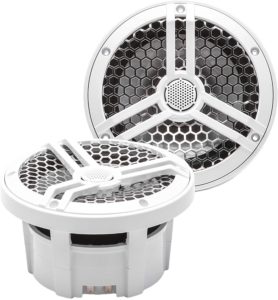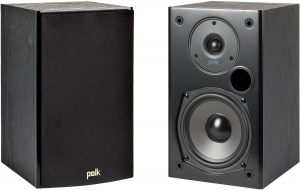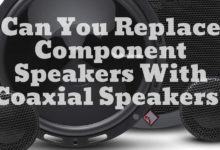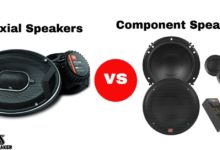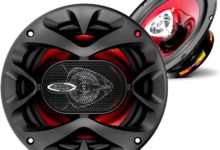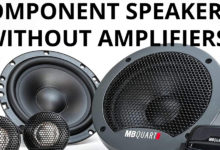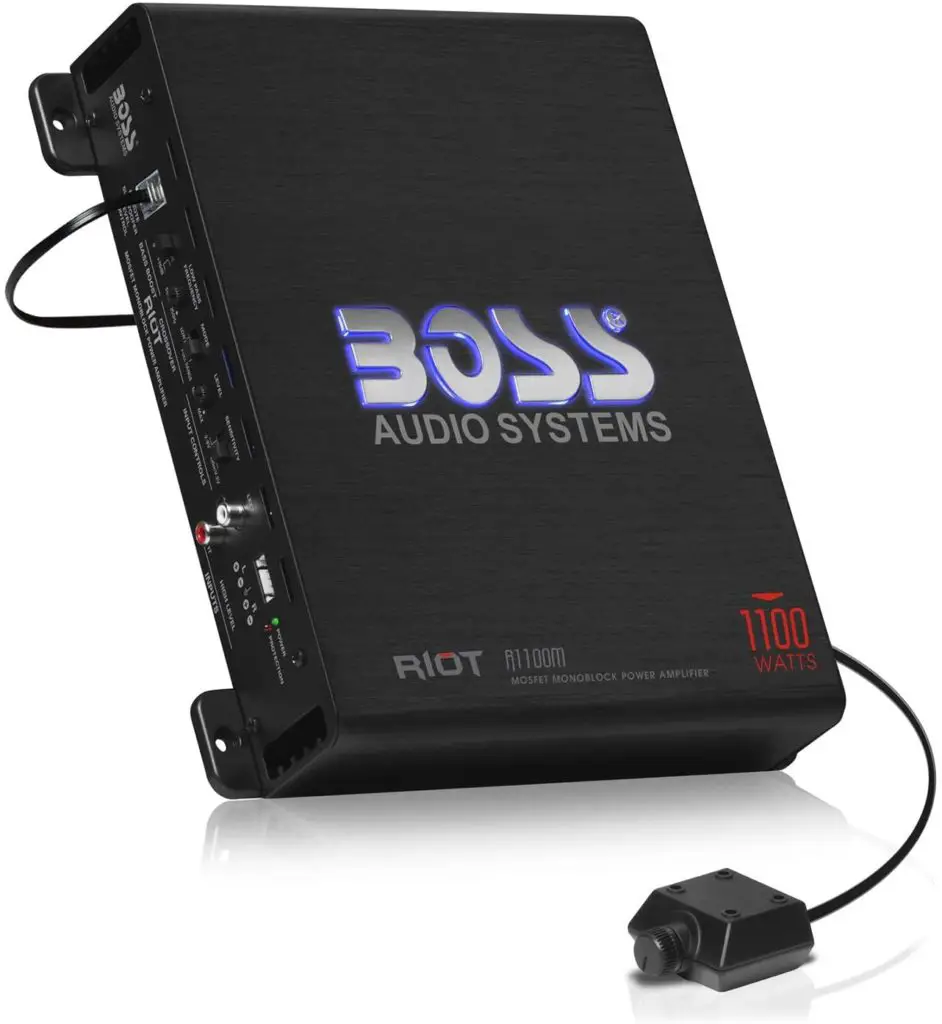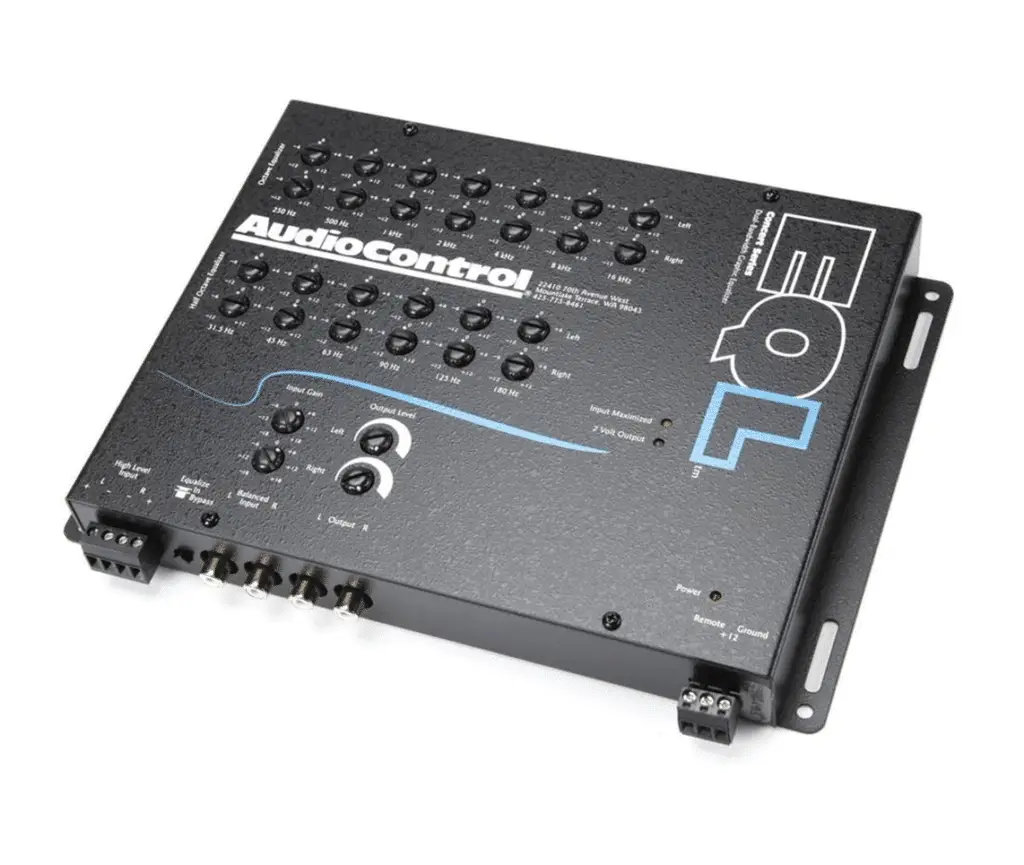Most car audiophiles enjoy maximum sound performance wherever they are. Whether they are in the house, office, or car. Most vehicles come with impeccable sound systems that perform best when you use them.
However, some audiophiles want the same earth-shaking sound performance in their car as they get in their homes and offices, and that brings us to the question; can I use home Speakers in my car?
The answer to the above question is yes, but it is not advisable. However, if you’re adamant and would love to fix home Speakers in your automobile, you should utilize high-sensitivity theater speakers. They are primarily prominent speakers equipped with horns.
Speakers in automobiles should be around 4 ohms or beneath. This makes it difficult for home Speakers to work because they are all beyond that number. However, you can make them work in an RV or a van.
One pressing issue that makes it a bad idea to use a home speaker for your car is the car’s harsh environment. Unlike in your house, the speakers are kept in an enclosed space which leaves them susceptible to heat, cold, and whatever condition the car owner decides to put the car.
Apart from getting in such conditions, these conditions will definitely happen in extremity because of the aforementioned confined space.
Over time, the speaker would deteriorate. This will affect its sound performance and its overall quality. Car stereos, on the other hand, are designed for such harsh conditions.
And that is because the manufacturers had all that in mind during production; if they wanted home Speakers installed in the cars, they would have done that themselves.
Before we go further, let’s take a look at the differences between home Speakers and car speakers. Knowing their differences will let you know how and why The former is incompatible with automobiles.
Table of Contents
Can I Use Home Speakers In My Car
Differences Between Home Speakers And Car Audio Speakers
To the untrained eye, home Speakers and car speakers seem the same. However, that’s not the case, as they have similar designs, which causes the misconception mentioned above.
Many differences between car speakers and home Speakers are pretty unique. Let’s take a look at some of them.
Design
Often, car speakers are marketed as raw drivers. Most of the components found in-car speakers are the same as what a bookshelf speaker carries, albeit when a separate tweeter and speaker.
Uniting both of them are encased crossovers to heighten the visual appeal. On the other hand, Home Speakers have these components encased in cabinets marketed in different colors and sizes.
Impedance
Impedance is one of the most prominent and notable differences between the two types of sound systems. For clarification and for those who do not understand what impedance means, we’ll start by defining it.
Impedance is the measurement used to determine the obstruction an electrical current gets from a conductive item.
The amplifiers in an automobile’s sound system are primarily low voltage, high amperage designs, which make it perfect for speakers with 4-ohm speakers.
As mentioned above, car and home Speakers can work in your car; it is pretty difficult or impossible to find a car speaker beyond 4 ohms.
Cosmetics
Several manufacturers of automobile speakers pay a lot of attention to ensuring that drivers are as impeccable and cosmetically different as possible. The difference between them and home Speakers is that they have drivers whose baskets are barely viewed.
Car speakers are examined both at the front and rear for cues in the design that emanate quality and power quality—furthermore, chromed baskets and flashier colors with the optional addition of flashing lights.
This is predominant among several car speaker brands. Generally, home Speakers are meant to work with existing furniture and design elements that fit seamlessly with the existing color.
Optimization
“Many automobile speakers are optimized to be utilized in minute spaces. The two properties aid in the definition of the conventional car audio environment. This is known as a”near-fired” design. “Many automobile speakers are optimized to be utilized in minute spaces. The two properties aid in the definition of the conventional car audio environment. This is known as a “near-fired” design.
It bears a likeness to the ideology behind studio monitors. Ideally, home Speakers are generally suited for different rooms of different sizes, with their ability to play in larger spaces more a function of amplifier power than overall design.
Automotive speaker designers recognize that cars have what is known as transfer function — small environments reinforce low frequencies.
Steps To Use Home Speakers In Your Car
However, if you’re persistent and want to try it out, follow these steps to use home Speakers in your car.
Step 1
Open the trunk and disconnect one pair of speaker wires from the existing automotive speakers. Note which wire is positive and negative when removing these wires.
Step 2
Look at the home speaker. Notice the type of connection that it has. If the home speaker still has a speaker wire attached, then connect the positive home speaker wire to the positive automobile speaker wire.
Then connect the negative home speaker wire to the negative automobile speaker wire. Repeat this process for each home speaker added. If the home speaker has RCA plugs, then go to step 3.
Step 3
Plug an RCA plug into the home speaker. Cut the other RCA plug from the RCA cable. Strip 1/2 of an inch of insulation from the two wires from the RCA plug.
Connect the positive RCA plug wire to the positive automobile speaker wire. Then connect the negative RCA plug wire to the negative automobile speaker wire. Repeat this process for each home speaker added.
Turn on the system and listen to the sound coming out of each speaker to verify everything is working.
Steps To Improving The sound System In Your Car.
If you want to remain on the safe side, we suggest you follow these steps to improve the sound system in your car.
Relatively inexpensive amps and speakers that don’t deliver top-notch sound.
You can make a big difference in your system’s sound quality by installing a nice set of aftermarket speakers. You’ll hear tighter bass and more overall clarity, and you’ll most likely notice details you’ve never heard in songs you’ve known for years.
Replacement speakers give you maximum bang for your buck, so they’re a terrific first step on the road to better sound. And if you want to know the best car speakers for bass, see tip #5.
Bypass your Music Player’s built-in Digital-to-analog Converter.
A digital-to-analog converter, or DAC, can convert digital information — 0’s and 1’s — into analog music signals. In most cases, your music player is probably your smartphone.
Its built-in DAC usually works well enough for casual listening with earbuds. Still, it doesn’t deliver the same level of performance you can get from the more advanced DACs found in many of today’s better car stereos.
Fortunately, if you can connect your iPod or phone to your aftermarket stereo via a USB cable, you can bypass your device’s DAC.
“It depends on the individual stereo, so be sure to check the the stereo’s info in the” Details” tab on the Crutchfield website for confirmation.”It depends on the individual stereo, so check the stereo’s info in the “Details” tab on the Crutchfield website for confirmation.
Use Sound-Deadening Material
By reducing vibration and road noise, Dynamat, Hushmat, and other sound-deadening products do two things to make your system sound better.
First, a door panel isn’t the best place for a speaker — the thin metal vibrates as your music plays, affecting the sound’s accuracy.
Attaching these products to your door panel deadens those vibrations and creates a more stable platform for your speaker, more like the wooden baffle on a home speaker.
Second, have you ever noticed that your system sounds perfect at 25 mph but gets slightly harsh when you hit 60? Road noise tends to mask the lower frequencies first, so your system sounds overly bright when you turn it up at highway speeds.
Sound-deadening material lowers interior noise levels in your car, so you don’t have to turn your music up as loud when driving. You’ll hear more musical detail, and your amps won’t have to work as hard. And that’s all good.
Add a Car Amplifier
When friends ask me, “What are the best car speakers for bass?” My answer is always: “An amplifier.” That’s because no matter how good your speakers are, you’ll get their best performance by adding more power (within their performance specs).
You may say, “My factory stereo puts out 200 watts, and that’s plenty of power.” But there’s a vast difference between 50 watts of peak power per channel your car stereo produces and 50 watts RMS from an outboard amplifier.
A separate amplifier will provide more clean power than any car stereo, making a night-and-day difference in sound quality.
Your system will sound better whether you listen to Mahler at a conversational level or Metallica turned up to 11. An amplifier is essential to getting great sound in your car.
Add a Signal Processor or an Equalizer
The interior of a car presents some serious problems regarding sound quality. Glass and plastic surfaces reflect sound like crazy. At the same time, carpet, seat covers, and other absorbent materials soak it up.
“Add poorly placed speakers to the mix, and you wind up with significant frequency response peaks in most car interiors. These peaks make your music boom in the bass or shrill in the upper frequencies, causing”ear fatigue.”Add poorly placed speakers to the mix, and you wind up with significant frequency response peaks in most car interiors. These peaks make your music boom in the bass or shrill in the upper frequencies, causing “ear fatigue.”

